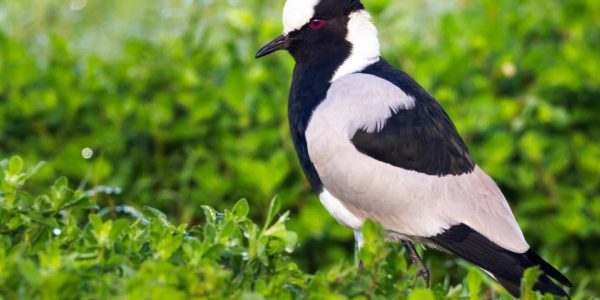In 40 years time, the population of wild passenger pigeons went from 2-3 billion to none. Today, hundreds of species, with their habitats disappearing and their climate changing, face critical threats and need conservation help.
This week, 100 years after the extinction of the passenger pigeon, a team of scientists involved with the U.S. Committee of the North American Bird Conservation Initiative released the expansive 2014 State of the Birds Report. The document is based on extensive reviews of population data from long-term monitoring of species.
The report’s authors identified aridlands of the West as the habitat with the steepest population declines in the nation. The report shows a 46 percent decline since 1968 for birds in Utah, Arizona and New Mexico, places where desert, sagebrush and chaparral habitats that have been destroyed or fragmented by development.
The report also emphasizes a significant threat to species that breed in the nation’s grasslands, birds such as the eastern meadowlark and the bobolink.
“This report,” says Wayne Clough, secretary of the Smithsonian Institution, “highlights the threats that birds face, but it also offers hope for their future if we act together.”
Habitat loss and fragmentation are at the top of the threat list, but invasive species also are seriously impacting birds, especially on the islands of Hawaii. One-third of U.S. federally endangered birds are Hawaiian species, according to the report’s authors.
Meanwhile, shorebirds along the U.S. coasts are being “squeezed into shrinking strips of habitat due to development.”
The report’s authors created a watch list, which names 233 species that are endangered or at risk of becoming endangered without significant conservation, and a list of 32 common birds in steep decline.
The watch list includes 42 open ocean species, including the Laysan albatross and the black-footed albatross, both threatened by increased levels of oil contamination, plastic pollution and reduced prey fish due to commercial fishing operations.
The watch list includes half of the shorebird species found in the United States, including the red knot, piping plover and long-billed curlew.
Thirty neotropical migrants — birds that breed in North America and migrate south of the border in the winter — are on the watch list.
The positive emphasized in the State of the Birds Report: Targeted conservation efforts directly benefit birds. The scientists observed a steady rise in populations among 49 coastal species that have access to national wildlife refuges and national seashores.
And in the Appalachian Mountains and the Northwest, land conservation has helped declining species such as the golden-winged warbler and the oak titmouse.
In a news release issued with the report, Interior Secretary Sally Jewell said, “Because the ‘state of the birds’ mirrors the state of their habitats, our national wildlife refuges, national parks, national seashores and other public lands are critical safe havens for many of these species — especially in the face of climate change — one of the biggest challenges to habitat conservation for all species in the 21st century.”
